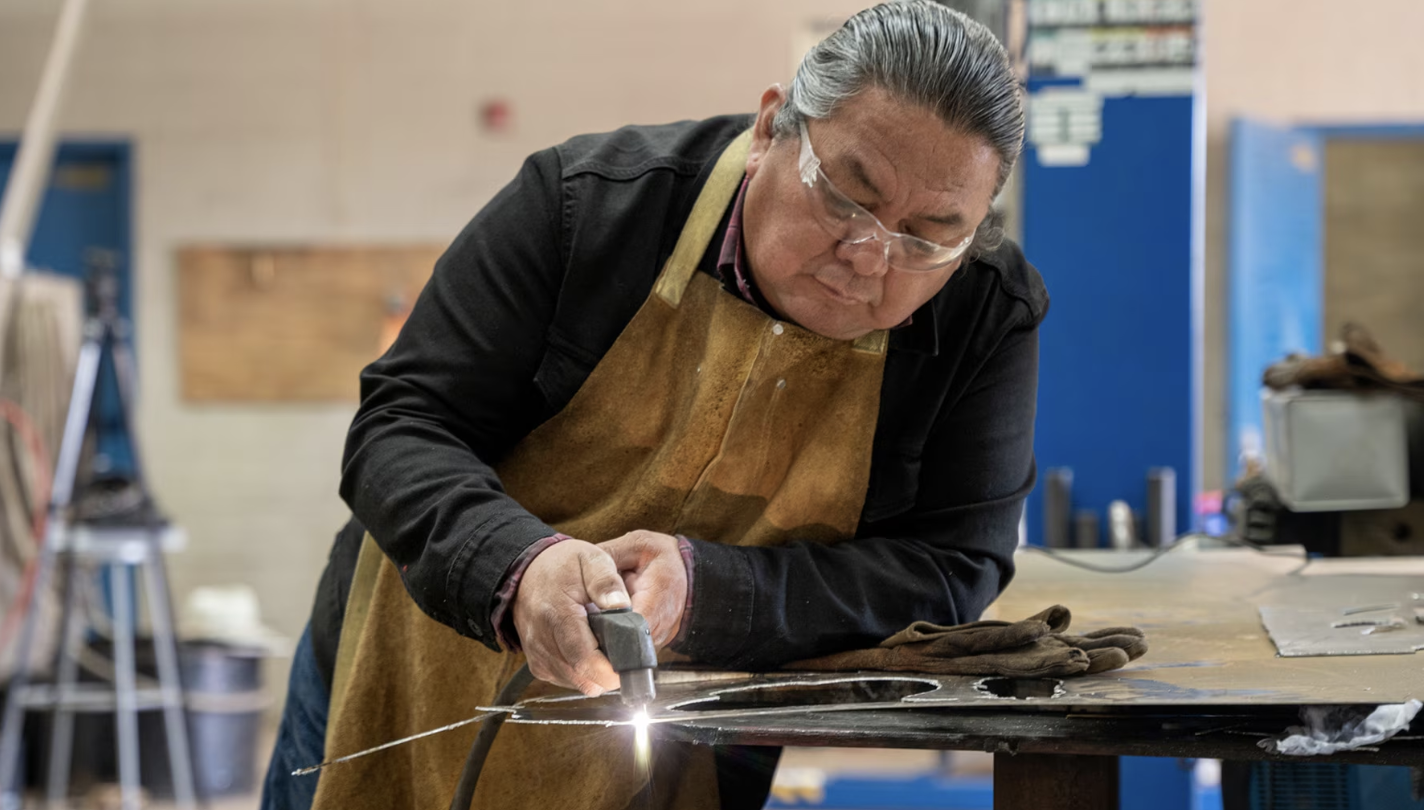
- Details
- By Victoria Elizabeth Fine and Thera Naiman
For the first time, The Opportunity Project (TOP) recently focused its efforts solely on improving access to funding for Indigenous communities, more than a quarter of whom live in poverty.
In partnership with the U.S. Economic Development Administration (EDA), TOP teams used data from the U.S. Census Bureau and other federal agencies and worked over the course of 12 weeks to come up with ways to funnel more capital and investment to Indigenous communities and improve their representation in federal datasets.
Each year, TOP collaborates closely with federal agencies and nongovernmental organizations (NGOs) to identify pressing challenges facing communities across the United States that can benefit from new, accessible data-driven tools.
This TOP challenge was a timely one. According to a 2019 Federal Deposit Insurance Corporation (FDIC) survey [PDF 2.2 MB], more than a quarter of American Indian and Alaska Natives live in poverty and almost a fifth do not have any type of checking or savings account.
TOP initiatives including this challenge will be presented at the Census Open Innovation Summit 2024 January 17 to January 19. TOP brings together government, technologists and community groups to rapidly prototype digital products using federal open data. In this sprint, teams had the opportunity to work alongside leaders from Indigenous communities to create solutions. Many focused on Native Community Development Financial Institutions (CDFIs) key to increasing access to capital, credit and financial services in these communities.
Some of the tools the teams created:
- A workforce resource map for Native CDFIs. Sweet Grass Consulting, LLC used Census Bureau data to build the interactive Native CDFI Workforce Resource Map, which provides information about workforce resources to Native CDFIs looking to build their staff capacity.
- Interactive maps to connect investors to Native communities. Oweesta used its international databases and the CDFI Fund’s List of Certified CDFIs [XLS <1.0 MB] to build two interactive maps — one for funders aiming to invest in Native communities and one for Native CDFIs in search of funding. These maps connect Native CDFIs and investors to support moving capital into Native American, Alaska Native and Native Hawaiian communities.
- Identifying a thriving wage for the Cheyenne River Reservation. Indigenous Impact Co. and Four Bands Community Fund collected local data to identify the hourly wage required for families on the Cheyenne River Reservation to thrive. The methodology can be replicated to empower other Indigenous areas. The data can be used to guide decisions by Native CDFIs, tribal economic development departments, reservation-based businesses, businesses considering hiring a reservation-based workforce and future Native homeowners.
- Combining data with personal stories to attract capital to Indigenous communities. Lenderfit promotes storytelling as a way to attract investments. It used data from Census’ My Tribal Area tool to share stories of Indigenous business owners with potential investors and loan pool funders.
“These products provide Indigenous thought leaders, economic development practitioners, and private and public funders data-driven, human-centered tools to thoughtfully deploy capital in Indigenous communities,” said Thomas Hitz, a management and program analyst in EDA’s Performance, Research and National Technical Assistance Division.
To spotlight current discussions regarding open data initiatives and tribal data, Census Open Innovation Labs (COIL) is set to host a panel about the importance of Tribal Data Sovereignty January 18 at this year’s Census Open Innovation Summit 2024.
“The Census Bureau strives to prioritize the unique government-to-government relationship between the Census Bureau and American Indian and Alaska Native (AIAN) tribal governments,” said Dee Alexander, a tribal affairs coordinator at the Census Bureau. “So, it is wonderful to see how this Opportunity Project sprint enabled us to partner with and learn directly from Indigenous-led organizations and community experts that participated in the sprint.”
In addition to the EDA-led sprint, TOP tackled seven other challenges, including:
- Improved Data Access for Local Policymakers (U.S. Department of Commerce).
- Financing for Innovation and Technology Transfer in Puerto Rico (Minority Business Development Agency, the Puerto Rico Science, Technology & Research Trust, Colmena66).
- Promoting Competition in the Credit Card Market (Consumer Financial Protection Bureau).
- Improving Access to Electrical Power for Climate Resilience (U.S. Department of Energy).
- Tracking Federal Funding Impact in Puerto Rico (PolicyLink, U.S. Department of Commerce, Puerto Rico Office of Management and Budget).
- Reducing the Literacy Gap in Puerto Rico Households (Todos a Leer Coalition).
- Building Social Infrastructure Resilience for Local Communities (National League of Cities).
Register here for the Census Open Innovation Summit 2024, when all the products from these sprints will be presented. The event will be live streamed on Census Live.
Victoria Elizabeth Fine is a senior advisor for the Census Open Innovation Labs (COIL).
Thera Naiman is COIL’s innovation program manager.
Help us defend tribal sovereignty.
At Native News Online, our mission is rooted in telling the stories that strengthen sovereignty and uplift Indigenous voices — not just at year’s end, but every single day.
Because of your generosity last year, we were able to keep our reporters on the ground in tribal communities, at national gatherings and in the halls of Congress — covering the issues that matter most to Indian Country: sovereignty, culture, education, health and economic opportunity.
That support sustained us through a tough year in 2025. Now, as we look to the year ahead, we need your help right now to ensure warrior journalism remains strong — reporting that defends tribal sovereignty, amplifies Native truth, and holds power accountable.
 The stakes couldn't be higher. Your support keeps Native voices heard, Native stories told and Native sovereignty defended.
The stakes couldn't be higher. Your support keeps Native voices heard, Native stories told and Native sovereignty defended.
Stand with Warrior Journalism today.
Levi Rickert (Potawatomi), Editor & Publisher

